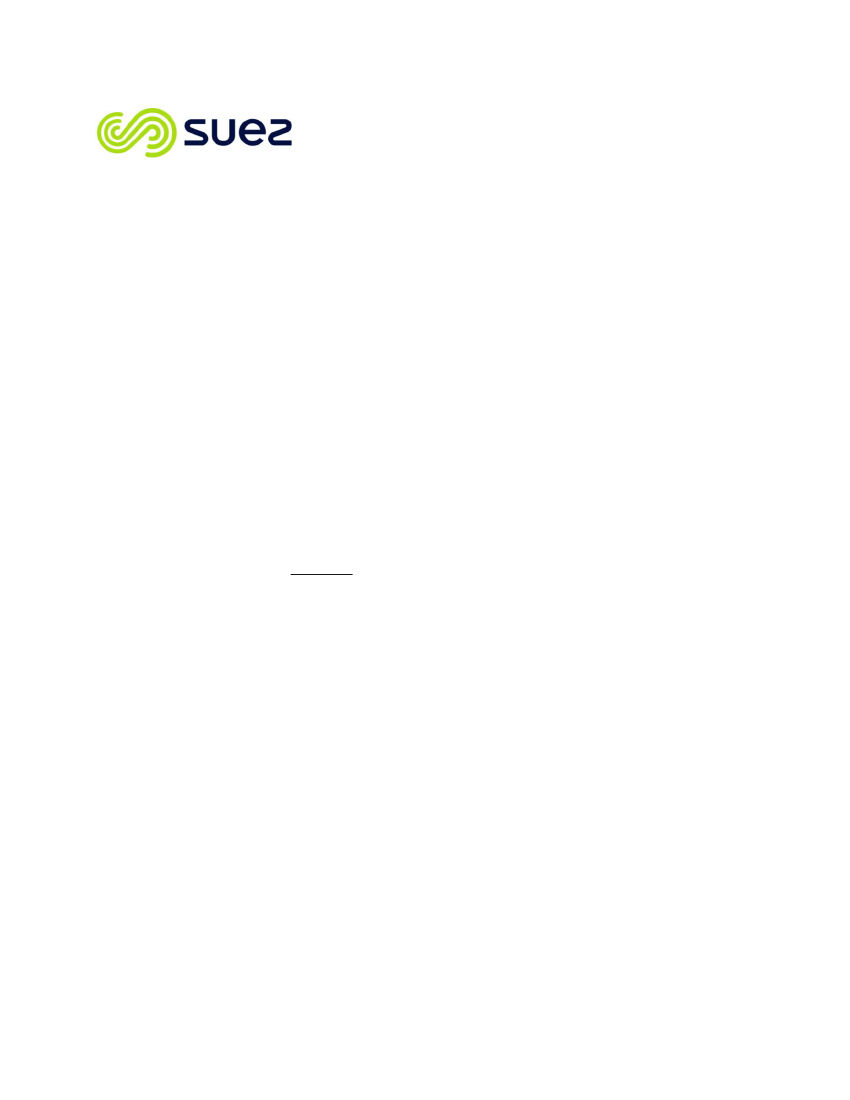
Water Technologies & Solutions
3600 Horizon Blvd
Trevose, PA 19053
Tuesday 7 June 2022
Mr. Martin Beekman – Netherlands
Dr. Mandy Lokaj – Germany
Ms. Jenny lvarsson – Sweden
Mr. Toke Winther – Denmark
Mr. Audun Heggelund – Norway
Mr. Mark Blainey
–
ECHA
Dear Madam or Sir,
Suez Water Technologies and Solutions (WTS) is a provider of ultrafiltration membranes
made of fluoropolymer (PVDF), as well as Polyether Sulfone (PES). We supply our
technologies to Water and Wastewater plant constructors and operators in Europe and the
rest the world, who are like us, committed to healthier potable water, and water resource
protection and sustainability through direct reuse for irrigation, industrial usages, and
replenishment of our surface and ground waters.
Suez WTS has also developed and introduced a range of removal and remediation
technologies and services to address contamination of PFAS for industrial, military, and
municipal sites as described in the Appendix A. This offer is unmatched in ability to be
tailored to specific situations at the lowest possible capital and operating expenditure.
We made the decision to contact you directly through this letter in order to provide an
explanation of the criticality of both PES and PVDF filtration membranes for water and
wastewater treatment which are both essential to our society. WTS manufactures
membranes at our factory located in Europe (Hungary) and we are able to provide solutions
for different applications and achieve the highest finished water purification, including
eliminating pathogens (parasites, bacteria and viruses), micropollutants (such as pesticides,
pharmaceuticals, personal care products (PCPs), endocrine disruptors (EDCs)) and
microplastics. The WTS PES membrane is used for potable or industrial water production
where source water contains low levels of solids and dissolved organic matter (e.g., ground
water sources or low turbidity surface water). The WTS PVDF membrane is used for
treating municipal sewage and industrial wastewaters and, increasingly, surface water
bodies subject to runoff due to Climate Change. These impacted surface waters contain
high levels of turbidity and pollutants. PVDF membranes have superior properties that allow
them to be used in these challenging applications, whereas PES membranes are not
suitable. For this reason, the water and wastewater industry relies on PVDF membranes for
these critical applications and considers this polymer to be essential to sustaining a
substantial install base of existing water and wastewater treatment plants and to meet the
growing need for this advanced treatment solution across Europe and the rest of the world.
Jenny. [email protected]